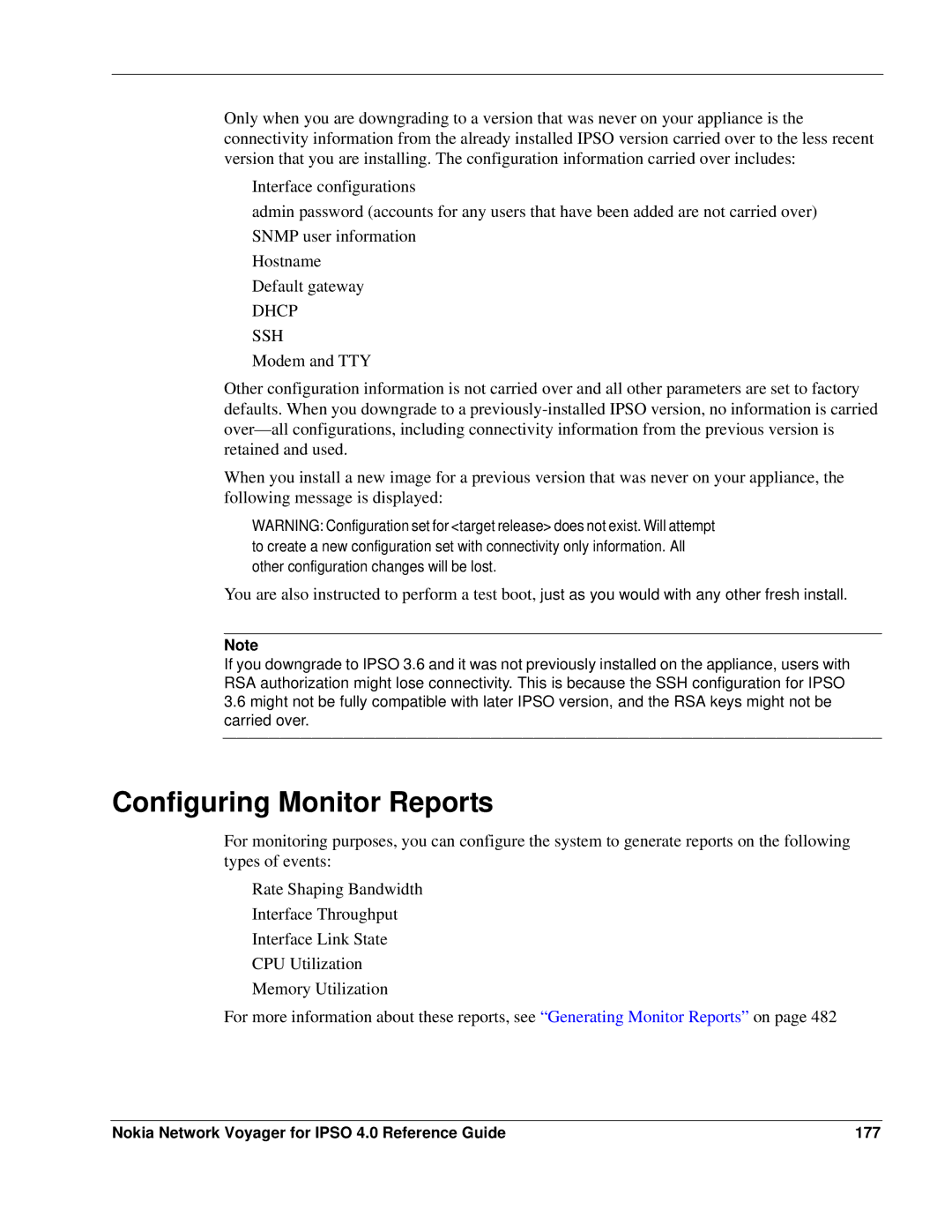
Only when you are downgrading to a version that was never on your appliance is the connectivity information from the already installed IPSO version carried over to the less recent version that you are installing. The configuration information carried over includes:
Interface configurations
admin password (accounts for any users that have been added are not carried over)
SNMP user information
Hostname
Default gateway
DHCP
SSH
Modem and TTY
Other configuration information is not carried over and all other parameters are set to factory defaults. When you downgrade to a
When you install a new image for a previous version that was never on your appliance, the following message is displayed:
WARNING: Configuration set for <target release> does not exist. Will attempt to create a new configuration set with connectivity only information. All other configuration changes will be lost.
You are also instructed to perform a test boot, just as you would with any other fresh install.
Note
If you downgrade to IPSO 3.6 and it was not previously installed on the appliance, users with RSA authorization might lose connectivity. This is because the SSH configuration for IPSO
3.6might not be fully compatible with later IPSO version, and the RSA keys might not be carried over.
Configuring Monitor Reports
For monitoring purposes, you can configure the system to generate reports on the following types of events:
Rate Shaping Bandwidth
Interface Throughput
Interface Link State
CPU Utilization
Memory Utilization
For more information about these reports, see “Generating Monitor Reports” on page 482
Nokia Network Voyager for IPSO 4.0 Reference Guide | 177 |
